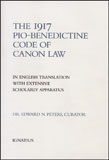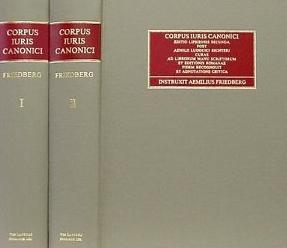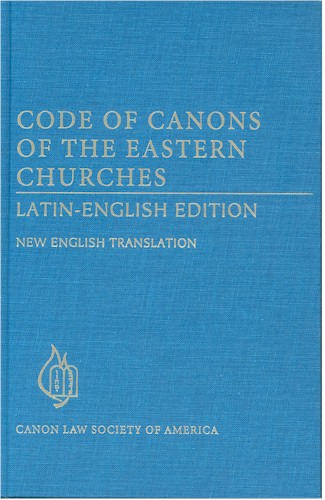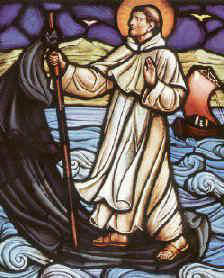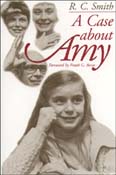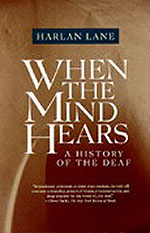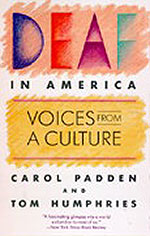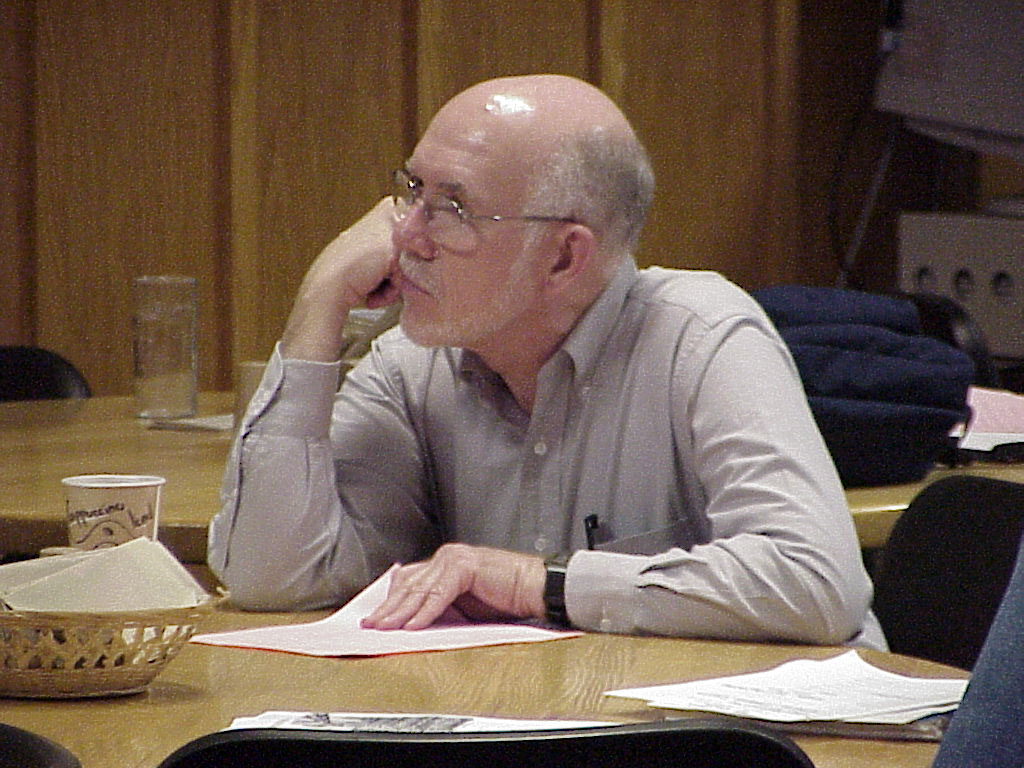|
To work for the proper implementation of canon law is to play an extraordinarily constructive role in continuing the redemptive mission of Christ. Pope John Paul II |
|
|
|
|
Resolution 1152 x 864 |
Updated 4 nov 2013 |
Deaf Catholic Matters |
|
Overview
As he passed by, Jesus saw a man blind from his birth. And his disciples asked him, "Rabbi, who sinned, this man or his parents, that he was born blind?" Jesus answered, "It was not that this man sinned, or his parents, but that the works of God might be made manifest in him." John IX: 1-3.
|
During my senior year in college I acted on a long-term interest in American Sign Language by taking two courses in Signed English, attending Mass-in-sign at the famous 'Rock Church' in St. Louis for some months, and, though terribly under-qualified, volunteering as a teacher for two deaf kids in a Saturday morning CCD program. Once I was even called by the municipal court to interpret for a deaf man on trial for something or another—I went, terrified that I would actually have to interpret. Thank goodness I didn't have to (a real interpreter showed up just in time) but, that someone like me could actually get a call for something like that, indicates what the state of Deaf services was back then. Not very good. Fifteen years later, married and living in San Diego, a local parish advertised an ASL class to meet one evening a week. I signed up and brought along our oldest, then ten or so, for the experience. We enjoyed our class. I think I got a certificate for good attendance. And that, I thought, was that.
How was I to know? It had all been part of God's plan, and God wasn't done yet.
A year or so later, deafness came to live with us when our fifth child, Meg, was born bi-laterally, congenitally, profoundly deaf. What had started out as a curiosity on my part became such a part of our family life that none of us can imagine it any other way.
|
|
Some good books for parents raising deaf children.
Amy June Rowley, now a member of the NCOD Committee described below, was the subject of a US Supreme Court decision in 1982.
|
As hearing parents from hearing families, Angela and I did an enormous amount of reading as we oriented ourselves to Meg's way of life. Some of the reading we did on deafness and Deaf culture I summed up for others, below.
See also:
Jerome Schein and David Stewart, Language in Motion: exploring the nature of sign (Gallaudet University,1995) 221 pp. • Excellent, readable by general audience. Order here.
C. Valli, et al., Linguistics of American Sign Language: An Introduction [1992], 4th ed., (Gallaudet University, 2011) 584 pp. • Excellent, but mostly for those with interest linguistic technicalities. Order here.
|
|
My AAD essay |
Angela and I faced, of course, almost immediately, the cochlear implant decision. I used an essay to help myself think through the C.I. decision, an essay that was eventually published in the American Annals of the Deaf. I have seen it cited many times over the years as a reasonable articulation of why parents might decide that an implant is not the right choice for someone with Meg's hearing profile. See: Edward Peters, "Our Decision on a Cochlear Implant", American Annals of the Deaf 145/3 (October, 2000) 263-267.
My essay occasioned the following response:
Dear Editor:
I recently read the article "Our Decision on a Cochlear Implant" by Edward Peters and believe it to be one of the most insightful articles I've read to date regarding such an important decision in a child's life and that of her family. I learned so much from Mr. Peters' perspective as a parent and appreciate his and his wife's willingness to share such a personal decision with others. I trust that Mr. and Mrs. Peters will have their child's love and respect for years to come and would not be surprised to learn that Margaret's pride in her parents grows as she reads this article at various times throughout her life.
Mrs. Mary Boas Hayes, IC/TC, Sign Language Interpreter, Abraham Lincoln High School
|
|
Canonical studies related to Deafness
My "Bibliography of Deaf Catholic Studies", a work in progress, is here. |
Professionally, I have several times investigated canonical issues related to deafness and published the results of that research in various venues, as below.
I have written two defenses of the use of ASL in the liturgy: "American Sign Language in Catholic Liturgy, I" (1999), here; and "American Sign Language in Catholic Liturgy, II" (2001), here.
I have published two (of a projected three) articles on the canon law regarding the ordination of Deaf men, the validity of signed sacramental form, and (tba), as follows:
• Edward Peters, "Canonical and cultural developments culminating in the ordination of Deaf men during the twentieth century", Josephinum Journal of Theology 15 (2008) 427-443. Abstract: This article outlines the ecclesiastical and social developments that contributed to the recent emergence of deaf clergy in the United States and abroad, and provides an orientation to clinical deafness in general and Catholic deaf culture in particular as an aid to seminary personnel who might assist in the discernment and development of clerical vocations among deaf Catholics.
• Edward Peters, "The ordination of men bereft of speech and the celebration of sacraments in sign language", Studia Canonica 42 (2008) 331-345. Abstract: This article confirms the removal from canon law of objections to ordination based solely on a man's hearing or speech profile and demonstrates that the requirements of "sacramental form" can be satisfied by a minister's use of signed languages even without accompanying sotto voce enunciation of texts.
• Edward Peters, "tba".
|
|
|
|
|
|
For some six years from 2005-2011, I served on the Religious Sign Translation Committee of the National Catholic Office for the Deaf, a group of Deaf and hearing experts tasked with developing and modeling congregational responses for the main prayers at Sunday Masses celebrated in American Sign Language. This time, if I may say so, I was somewhat more qualified to serve than I had been back in my CCD days, though, I need hardly add, I learned far more about deafness, Deaf culture, and sign language from the Deaf members of that committee than they learned—or needed to learn—about Latin number-gender-case from me. See generally, Resource Page on Religious Sign Translation Committee, NCOD, here.
|
|
Other points
|
American Sign Language as a Catholic pastoral language, here.Bibliography and Free Notes
Marcel Broesterhuizen, “Faith in Deaf culture”, Theological Studies 66 (2005) 304-329.
Harlan Lane, When the Mind Hears: a History of the Deaf (Vintage, 1984) 537 pp.
W. Stokoe, et al., Dictionary of American Sign Language on Linguistic Principles (Gallaudet College, 1965) = pp.
Robert Lang, A Phone of Our Own, (Gallaudet University, 2000) = pp.
Anne Bamberg, “Passion autour des signes et confession du sourd: enquête à partir de manuels de morale en tradition catolique”, Praxis Juridique et Religion 15 (1998) 97-155.
Mandy Erickson, “A Parish Where the Deaf Come First”, St. Anthony Messenger (March 1999) 12-15.
Marcel Broesterhuizen, “The Gospel Preached by the Deaf: Conversation as Complete Form of Language in Pastoral Ministry with the Deaf”, Louvain Studies 27 (2002) 359-375.
Marleen Sullivan, “Hearing Loss: an invisible disability”, Liguorian 91 (May-June 2003) 21-23.
Anne Bamberg, “Sourds et silences liturgiques”, Gregorianum 85 (2004) 689-698.
Charles Dittmeier, “Deaf People and Catholic Liturgy” Pastoral Music (June-July 2006) 19-21.
Michael Ndurumo & Esther Njeri Kiaritha, “The Deaf and Hard of Hearing: an Implication for Church Leaders”, African Ecclesial Review 48 (2006) 187-202.
Cyril Axelrod (South African priest, b. 1942), The Journey Begins (McLean Publishing, Coleford, 2005) = pp., [herein, Axelrod, Journey]. Axelrod’s deafness was the result of Usher Syndrome, which condition has since cost him his sight.
Scott Liddell, Grammar, Gesture, and Meaning in American Sign Language (Cambridge, 2003) 384 pp.
Registry of Interpreters for the Deaf, Code of Ethics (rev. 1995), in Melanie Metzger, Sign Language Interpreting: Deconstructing the Myth of Neutrality (Gallaudet University, 1992) [herein, Metzger, Interpreting] at 208-=
Anne Bamberg, “Culture sourde, droit canonique, et déontologie professionelle: réflexion à partir des interprètes pour Sourds”, Ephemerides Theologicae Lovaniensis 81 (2005) 200-213, [herein Bamberg, “Culture”]
Anthony Schuerger, “Making parishes accessible to Deaf persons”, Church (Fall, 1989) 28-33.
Jerome Schein & David Stewart, Language in Motion: Exploring the Nature of Sign (Gallaudet University, 1995) 221 pp.
C. Valli, et al., Linguistics of American Sign Language: An Introduction [1992], 4th ed., (Gallaudet University, 2005) 551 pp.
Janice Humphrey & Bob Alcorn, So You Want to Be an Interpreter: An Introduction to Sign Language Interpreting (Sign Enhancers, 1995) 423 pp.
William Stokoe, "Sign Language Structure: an outline of the visual communication system of the American Deaf”, Studies in Linguistics, Occasional Papers 8 (1960).
PBS/WETA documentary, “Through Deaf Eyes” (2007).
Gabriel Grayson, Talking with your hands, Listening with your eyes (SquareOne, 2003) 373 pp.
Anne Bamberg, “Passions autor des signes et confession du sourd: enquête à partir de manuels de morale en tradition catholique”, Praxis Juridique et Religion 15 (1998) 97-155 [herein Bamberg, “Passions”]
Dolores Beere, History of the Catholic Deaf: St. John’s Center, (Archdiocese of Detroit, 1984)
S. Klopfer, “The Penance of Deaf-Mutes”, American Ecclesiastical Review 57 (1917) 78-82, published despite obvious editorial disagreement with Klopfer’s thesis.
Paul Ogden, The Silent Garden (Gallaudet, 1996) 313 pp., [herein Ogden, Garden]
Paul Higgins, Outsiders in a Hearing World: A Sociology of Deafness (Sage Publications, 1980) [herein Higgins, Outsiders]
Thomas Spradley, Deaf Like Me (Gallaudet, 1985) 280 pp.
Carol Padden & Tom Humphries, Deaf in America: Voices from a Culture (Harvard, 1988) = pp., [herein Padden & Humphries, Culture]
Jacques-Yves Bellay, “L’enfant sourd: les institutions spécialisées en débat”, Études 372 (1990) 333-342.
Susan Schwartz, Choices in Deafness, 2d ed., (Woodbine, 1996) = pp.
Manual communication systems of some sophistication, though not languages and not developed by deaf persons, can be traced back at least as far as the 16th century. See, e.g., Marilyn Daniels, “The Benedictine Roots in the Development of Sign Language”, American Benedictine Review 44 (1993) 383-402, at 396-398.
The notorious “Conference of Milan” was an international assembly of hearing educators of the deaf, who, disregarding more than a century of proven effectiveness in educating the deaf with sign languages, launched what amounted to a cultural war against Deaf identify around the world and imposed an “oralist” tyranny, backed by government resources, on public and private deaf education. The regime instituted by the Conference of Milan lasted nearly a century and did enormous damage to Deaf culture. See generally H. Lane, When the Mind Hears (1984) 384-391.
View “Rev. Thomas Coughlin”, Deaf Culture Autobiographies 8E (VHS, American Sign Language Productions, 1999). Coughlin is now a Dominican Missionary. The phrase “deaf-of-deaf” means that Coughlin was born to Deaf parents, a fact that has cultural and sociological significance for his ministry. Deaf children born to Deaf parents are regarded by many as the primary custodians of Deaf culture.
Most experts agree that the number of deaf and hard-of-hearing people, while difficult to gauge, is probably higher than the hearing world perceives. Common estimates of hearing disorders place the incidence rate at 1-3 per 1,000 births, depending on the degree of hearing loss being measured. See generally “Deafness” in C. Clayman, ed., The American Medical Association Encyclopedia of Medicine (Random House, 1989) 333-334.
In keeping with the Woodward convention (1972), the word “deaf”, when spelled with a lowercase “d”, refers to the physiological condition of major hearing deficit, while the word “Deaf”, when spelled with an uppercase “D”, refers to various cultural realities that tend to arise among deaf persons over time. The categories of “deaf” and “Deaf” are not mutually exclusive, but only in this first appearance of the term is the potential overlap of these categories underscored by the orthography.
|

